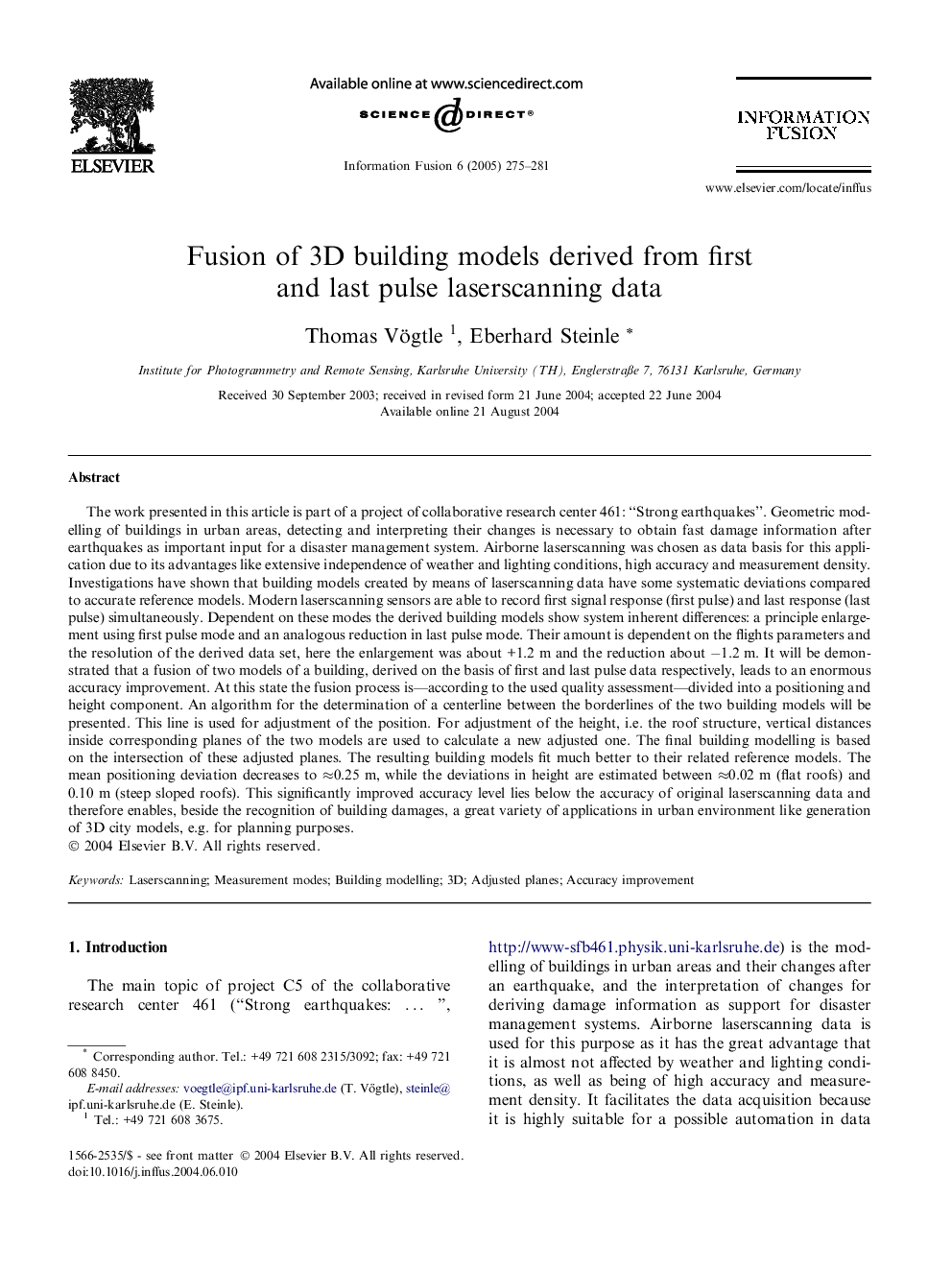| کد مقاله | کد نشریه | سال انتشار | مقاله انگلیسی | نسخه تمام متن |
|---|---|---|---|---|
| 10360120 | 869659 | 2005 | 7 صفحه PDF | دانلود رایگان |
عنوان انگلیسی مقاله ISI
Fusion of 3D building models derived from first and last pulse laserscanning data
دانلود مقاله + سفارش ترجمه
دانلود مقاله ISI انگلیسی
رایگان برای ایرانیان
موضوعات مرتبط
مهندسی و علوم پایه
مهندسی کامپیوتر
چشم انداز کامپیوتر و تشخیص الگو
پیش نمایش صفحه اول مقاله

چکیده انگلیسی
The work presented in this article is part of a project of collaborative research center 461: “Strong earthquakes”. Geometric modelling of buildings in urban areas, detecting and interpreting their changes is necessary to obtain fast damage information after earthquakes as important input for a disaster management system. Airborne laserscanning was chosen as data basis for this application due to its advantages like extensive independence of weather and lighting conditions, high accuracy and measurement density. Investigations have shown that building models created by means of laserscanning data have some systematic deviations compared to accurate reference models. Modern laserscanning sensors are able to record first signal response (first pulse) and last response (last pulse) simultaneously. Dependent on these modes the derived building models show system inherent differences: a principle enlargement using first pulse mode and an analogous reduction in last pulse mode. Their amount is dependent on the flights parameters and the resolution of the derived data set, here the enlargement was about +1.2 m and the reduction about â1.2 m. It will be demonstrated that a fusion of two models of a building, derived on the basis of first and last pulse data respectively, leads to an enormous accuracy improvement. At this state the fusion process is-according to the used quality assessment-divided into a positioning and height component. An algorithm for the determination of a centerline between the borderlines of the two building models will be presented. This line is used for adjustment of the position. For adjustment of the height, i.e. the roof structure, vertical distances inside corresponding planes of the two models are used to calculate a new adjusted one. The final building modelling is based on the intersection of these adjusted planes. The resulting building models fit much better to their related reference models. The mean positioning deviation decreases to â0.25 m, while the deviations in height are estimated between â0.02 m (flat roofs) and 0.10 m (steep sloped roofs). This significantly improved accuracy level lies below the accuracy of original laserscanning data and therefore enables, beside the recognition of building damages, a great variety of applications in urban environment like generation of 3D city models, e.g. for planning purposes.
ناشر
Database: Elsevier - ScienceDirect (ساینس دایرکت)
Journal: Information Fusion - Volume 6, Issue 4, December 2005, Pages 275-281
Journal: Information Fusion - Volume 6, Issue 4, December 2005, Pages 275-281
نویسندگان
Thomas Vögtle, Eberhard Steinle,